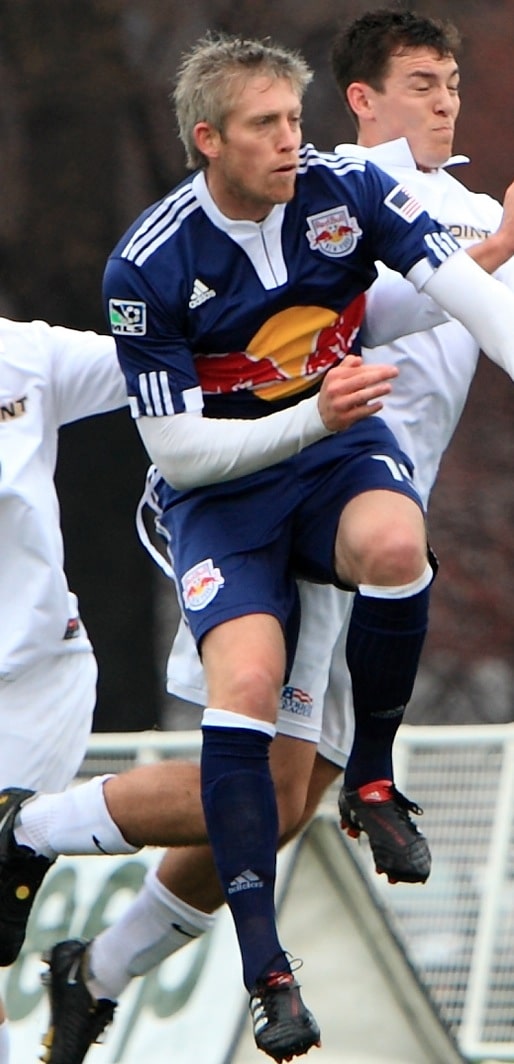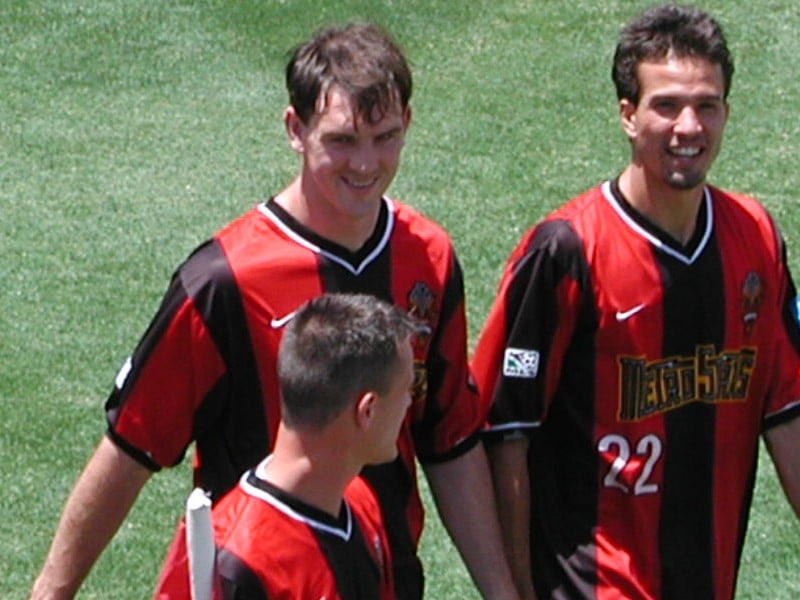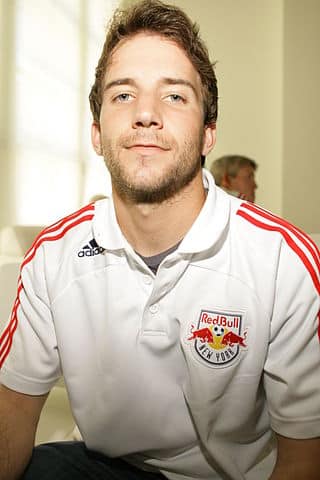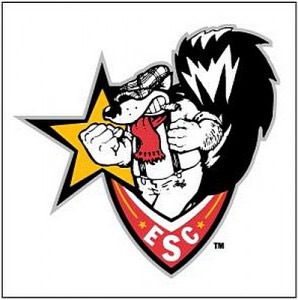This week, New York Red Bulls II (no prizes for guessing, that’s the reserve team of the New York Red Bulls MLS side. The II plays in the second-division USL.) announced that they had signed all five of the big club’s 2018 SuperDraft picks to contracts. So big congratulations to Blake Ian, Ruben Gomez, Rene Farrait, Raymond Acevedo and Charlie Masso.
Red Bulls Drafting History Part 1: Hits And Misses Through The Years
Tim Hall’s View From 101
Actually, those are five guys that were at one point or another part of the boy band Menudo. But would you have known that without being told, or would you have just accepted those names? Precisely.
The fact is that a lot of the Major League Soccer SuperDraft selections go on to less than glorious futures. And there’s really no rhyme or reason as to one’s position in the draft as it relates to their success. There is usually great value late, although knowing where that value is takes a divining rod and a few prayers to assorted deities.
To that end, it was worth a wonder: exactly how have the Red Bulls – and the Metrostars before them – fared in the draft over the years, and how well could they have fared knowing then what we know now? Here’s a look at the hits, but largely misses, and strange minutiae of the early years of New York’s drafting history.
1996 Inaugural Draft: Metrostars take Matt Knowles #9.
This was immediately the wrong pick as DC United would take Raul Diaz Arce at ten, and RDA would go on to kill the Metros for the better part of the next decade. NY/NJ would take Peter Vermes two rounds later who went on to be a US Soccer Hall of Famer, but not for his work here. Success elsewhere will be a frequent refrain.
1996 College Draft: Metrostars select Scott Lamphear #11
The Metros actually had the second overall pick but traded that to DC, who in turn took Eddie Pope, who would also be a stalwart for United for years to come and be in the US Soccer Hall of Fame as well. Players further down the list that could have been taken include Ante Razov (who would play in NY in the twilight of his career) and future head coach Jesse Marsch. Lamphear would stay in college through December 1996, join the Metros in 1997, but get cut in preseason.
1997 College Draft: Brian Kelly at #5
Kelly is a step up, which is damning with faint praise. 85 appearances, 10 goals for New York/New Jersey. After five years in MLS, Kelly retired and he’s now a Goldman Sachs banker. Instead of Kelly, we could have landed Steve Jolley or Kevin Hartman, both of whom would turn up for the Metros later in life.
1998 College Draft: Metrostars pick Mike Petke #8
Well, now, there have been better players to come through these parts, but few if any more beloved than Michael Petke. Still the franchise leader in yellow and red cards and third in all-time appearances. Make the case for Pablo Mastroeni or Matt Reis further down the board if you like, or Joe Cannon or Jimmy Conrad who went undrafted, but nobody around here is listening.
 1999 College Draft: At #7 John Wolyniec
1999 College Draft: At #7 John Wolyniec
The Staten Island Ronaldinho, the only Red Bull to score in an MLS Cup final, and currently the coach of the reserve team RBNY II, Wolyniec is another “yeah, but we love the guy” pick. Also, there wasn’t a whole lot of quality later. Andrew Mittendorf went with the next pick and never played in MLS. The following pick was Matt Chulis, 11 games. Tony Soto at number ten played appeared in four games. Wolyniec appeared in 167 matches for Metrostars/Red Bulls alone.
2000 SuperDraft: Metrostars take Steve Shak number one overall
For reasons known only to Major League Soccer, every draft from here on is called the SuperDraft. And boy was it super. Since Metro picked first, of course they got the best player. That also means there’s the whole rest of the draft after that for us to look back in regret.
Shak would play in 36 games in the red-and-black before being traded to Colorado the following year. You could effectively make an all-time MLS Best XI with the players Metrostars could have had instead: Carlos Bocanegra, future Red Bulls keeper Jon Conway, and… John Wolyniec?
Yep, despite all those aforementioned stats with the Metrostars, Wolyniec only played a handful of games in 1999, and so was eligible to be redrafted the following year, and was, when Chicago Fire took him #44 in 2000. Stand by, we’ll come back to Woly in a second.

2001 SuperDraft: Rodrigo Faria, #13
Having lost their first round pick through a number of trades, the Metrostars lead off the second round taking Faria. The Brazilian would win 2001 Rookie of the Year honors, and still ranks top ten on the franchise goals list. But because we can’t have nice things, Faria would be traded in 2002 to acquire the rights to Bob Bradley’s coaching prowess. In lieu of Faria, the Metros could have taken MLS journeymen Brian Ching or Edson Buddle, who, like half the players on this list, would eventually wind up here anyway.
2002 SuperDraft: #3, Brad Davis
Another great selection for everyone else, Davis played well in his one year for Metro, getting some votes as Rookie of the Year, and then got traded for the #4 pick the following year (more on that in a moment). Davis would bounce around before landing in Houston, where he’d make over 250 appearances and become a club legend. Oops. The Davis pick left Shalrie Joseph, Justin Mapp, and Jon Busch on the board, as well as future television commentators Kyle Martino and Alejandro Moreno.|

2003 SuperDraft: Ricardo Clark at #2, Mike Magee at #4
The Metros turned their natural pick into Ricardo Clark, who would go on to a sterling MLS career for Houston (the vaunted Metro to Dynamo pipeline strikes again). The Brad Davis trade turned into Mike Magee, the wunderkind who would go on to score 70 MLS goals across his career and secure a league Most Valuable Player award.
Again, just not here. Todd Dunivant would go at #6 but end up here eventually. NY would also score Eddie Gaven, Tim Regan and Bruce Arena’s son Kenny in this draft, and in the Supplemental Draft would again choose John Wolyniec.
After bouncing from Chicago to the A-League and then to New England Revolution, Wolyniec was cut and then drafted for a third time, this time back to Metrostars where he would start putting up numbers in earnest.roug
When we join you next time, we’ll jump into more modern day dealings of New York’s original MLS franchise. If you think it can only get better from here, boy do you have another thing coming.
